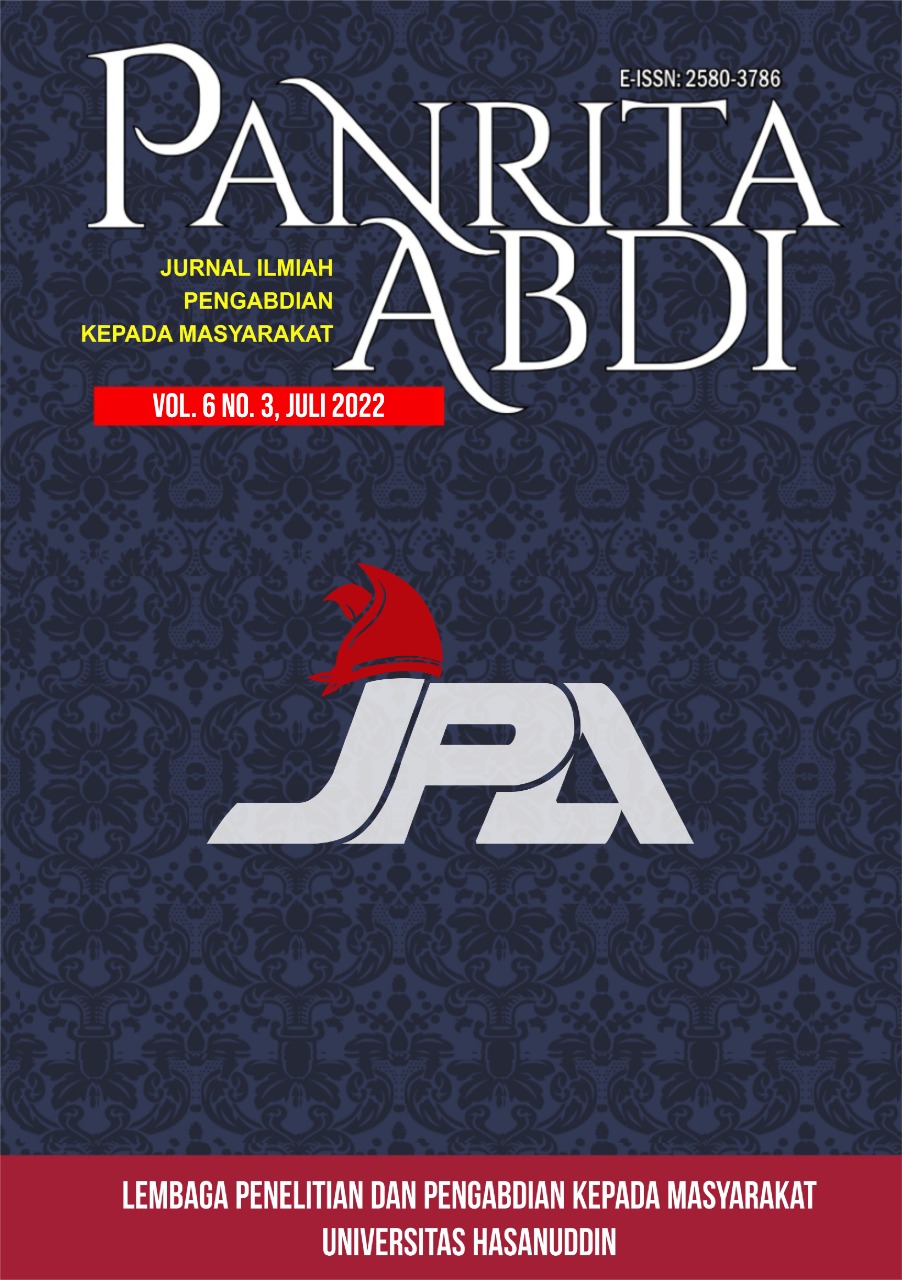PEMBINAAN STRATEGI GENERIK PORTER DAN BALANCE SCORECARD PADA INDUSTRI TAHU DI BATAM
DOI:
https://doi.org/10.20956/pa.v6i3.18288Keywords:
Balance scorecard, space matrix, SWOT, internal strategyAbstract
Community service for tofu and tempeh SMEs provides knowledge and direction in formulating strategies for facing competition and being able to anticipate various conditions. The goal is that the business to be run has a competitive advantage, creates and maintains superior performance, and knows competitors' strengths; we should be aware of internal and external conditions. The method carried out through the balanced scorecard strategy will look at business performance from various perspectives: financial (financial), customer strategy, process, learning, and growth strategies. This strategy is made in the form of a SPACE matrix with several variables in the evaluation matrix of internal factors such as financial strength and competitiveness while evaluating external factors such as environmental stability and industrial strength. So that we can find out what types exist in SMEs, whether they are aggressive, conservative, defensive, or competitive, this is the first step for SMEs to determine a long-term strategy. This step is made as a process to generate alternative strategies, choosing what strategy to do so that the goals of SMEs know this is going well. His research on tofu and tempeh SMEs have made conditions for external and internal factors so that 2.6 is obtained for the EFE matrix while the IFE matrix is 2.53. Furthermore, the internal is in moderate condition. --- Pengabdian masyarakat terhadap UKM tahu tempe memberikan ilmu pengetahuan dan arahan menyusun strategi dalam menghadapi persaingan dan mampu mengantisipasi dalam berbagai kondisi. Tujuannya diharapkan usaha yang akan dijalankan memiliki keunggulan kompetitif, menciptakan dan mempertahankan kinerja unggul, dan mengetahui apa kekuatan pesaing, hendaknya kita menyadari kondisi internal maupun kondisi eksternal Metode yang dilakukan melalui strategi balance scorecard akan melihat kinerja usaha berbagai perspektif Keuangan (finansial), strategi Pelanggan, proses, selanjutnya strategi pembelajaran dan pertumbuhan. Strategi ini dibuat dalam bentuk yang matrik SPACE dengan beberapa variabel yang ada pada matrik evaluasi faktor internal seperti kekuatan finansial, kompetitif sedangkan evaluasi faktor eksternal seperti stabilitas lingkungan dan kekuatan industri. Sehingga kita bisa mengetahui tipe apa yang ada pada UKM tahu tersebut apakah termasuk agresif, konservatif, devensif ataupun Kompetitif. Ini merupakan langkah awal UKM untuk menentukan strategi jangka panjang, langkah ini dibuat sebagai proses untuk menghasilkan strategi alternatif, memilih strategi apa yang akan dilakukan sehingga tujuan dari UKM tahu ini berjalan dengan baik. Pelaksanaan pengabdian pada UKM tahu tempe ini sudah dibuatkan kondisi faktor eksternal maupun internalnya sehingga diperoleh 2,6 untuk matrik EFE sedangkan pada matrik IFE diperoleh 2,53 dapat dilihat kondisi ini terletak pada kuadran V yaitu sedang yang artinya bahwa respon UKM tahu dan tempe terhadap factor eksternal maupun internal ini dalam kondisi sedang.
References
Arifin, S., Pebruary, S., & Fuad, E. N. (2017). Peningkatan Kualitas Produksi dan Administrasi UMKM Arang Kayu Jepara. Jurnal Panrita Abdi, 1(2), 131–134.
Diastuti, S. A., Cholifah, C., & Istanti, E. (2021). Pengaruh Ukuran Perusahaan, Profitabilitas dan Resiko Bisnis terhadap Struktur Modal pada Perusahaan Manufaktur (LQ45) Tahun 2015-2018. Benchmark. https://doi.org/10.46821/ benchmark.v1i2.149
González, A. (2020). An inventory management model based on competitive strategy. Ingeniare. https://doi.org/10.4067/S0718-33052020000100133
Mamabolo, A., & Myres, K. (2020). Performance Measurement in Emerging Market Social Enterprises using a Balanced Scorecard. Journal of Social Entrepreneurship, 11(1), 65–87. https://doi.org/10.1080/19420676.2018. 1561499
Mekić, E., & Mekić, E. (2014). Supports and Critiques on Porter ’ s Competitive Strategy and Competitive Advantage. ICESoS 2014.
Rafiq, M., Zhang, X. P., Yuan, J., Naz, S., & Maqbool, S. (2020). Impact of a balanced scorecard as a strategic management system tool to improve sustainable development: Measuring the mediation of organizational performance through PLS-Smart. Sustainability (Switzerland), 12(4). https://doi.org/10.3390/su12041365
Renko, N., Sustic, I., & Butigan, R. (2014). Designing Marketing Strategy Using The Five Competitive Forces Model By Michael E. Porter - Case Of Small Bakery In Croatia. International Journal of Management Cases. https://doi.org/10.5848/apbj.2011.00074
Salavou, H. E. (2015). Competitive strategies and their shift to the future. European Business Review. https://doi.org/10.1108/EBR-04-2013-0073
Sari, D. P., & Setiawan, M. A. (2021). Pengaruh Tangibility, Pertumbuhan Perusahaan, Resiko Bisnis dan Profitabilitas terhadap Kebijakan Hutang. Jurnal Eksplorasi Akuntansi. https://doi.org/10.24036/jea.v3i2.367
Stonehouse, G., & Snowdon, B. (2007). Competitive advantage revisited Michael Porter on strategy and competitiveness. Journal of Management Inquiry, 16(3), 256–273. https://doi.org/10.1177/1056492607306333
Wati, L. N., & Darda, A. (2012). Manajemen Resiko Bisnis. Jurnal Ekobis.
Downloads
Published
How to Cite
Issue
Section
License
Copyright (c) 2022 Elva Susanti, Citra Indah Asmarawati, Tukino

This work is licensed under a Creative Commons Attribution-NonCommercial-NoDerivatives 4.0 International License.











